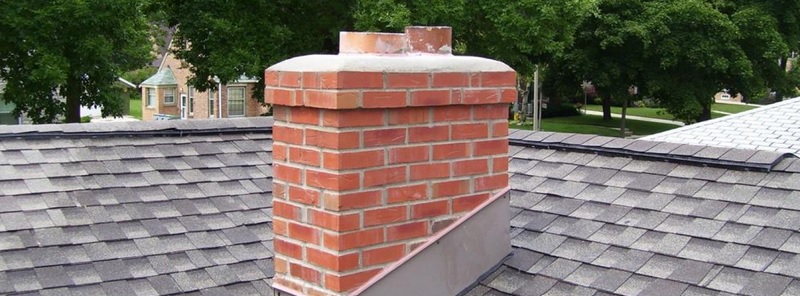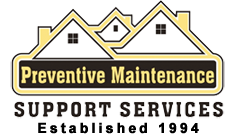
Masonry chimneys are a common feature in many homes, providing an efficient way to vent smoke and gases from fireplaces and stoves. Over time, these structures can deteriorate due to exposure to the elements and the effects of age. Masonry chimney repair is essential to maintain the safety and functionality of your chimney. In this guide, we will explore various techniques for repairing masonry chimneys and important considerations to keep in mind.
Common Issues with Masonry Chimneys
Before delving into repair techniques, it’s crucial to understand the common issues that masonry chimneys can face:
- Cracks: Cracks in the masonry can occur due to freeze-thaw cycles, settling, or structural issues. These cracks can allow water to penetrate and cause further damage.
- Spalling: Spalling refers to the flaking or chipping of masonry surfaces. It can result from moisture absorption and subsequent freeze-thaw cycles.
- Efflorescence: Efflorescence appears as a white, powdery substance on the surface of masonry. It occurs when soluble salts in the masonry are brought to the surface by moisture and then evaporate.
- Mortar Deterioration: Mortar joints can deteriorate over time, leading to gaps and reduced structural integrity.
- Leaking: Leaking chimneys are a common problem. Water infiltration can damage the chimney’s interior, rust the flue liner, and create mold and mildew issues.
Masonry Chimney Repair Techniques
Repairing a masonry chimney can vary in complexity depending on the extent of the damage. Here are common repair techniques used to address chimney issues:
1. Tuckpointing (Mortar Repair):
Tuckpointing involves removing deteriorated mortar joints and replacing them with fresh mortar. This technique helps restore the structural integrity of the chimney and prevents further damage.
Steps:
- Remove the damaged mortar joints using a chisel or grinder.
- Clean the joints to remove debris and dust.
- Mix a batch of mortar that matches the existing color and texture.
- Apply the new mortar into the joints using a pointing trowel.
- Shape and finish the mortar to match the surrounding masonry.
Tuckpointing is an effective method for addressing mortar deterioration and minor cracks in the chimney.
2. Brick Replacement:
If individual bricks are cracked, chipped, or otherwise damaged, they can be replaced to restore the chimney’s appearance and functionality.
Steps:
- Carefully remove the damaged brick by chiseling away the mortar joints.
- Clean the area to remove any debris and old mortar.
- Install the new brick, ensuring it is level and aligned with the existing masonry.
- Apply fresh mortar to secure the new brick in place.
- Finish the mortar to match the surrounding joints.
Brick replacement is suitable for addressing localized damage to the chimney’s structure.
3. Crown Repair or Replacement:
The crown is the concrete or mortar slab that covers the top of the chimney stack. It protects the chimney from water intrusion. Cracks or deterioration in the crown can lead to leaks.
Steps:
- Remove any loose or damaged material from the crown.
- Repair cracks with a suitable crown repair mortar.
- Seal the crown with a waterproof coating to prevent further damage.
In cases of severe crown damage, it may be necessary to completely replace the crown with a new one.
4. Waterproofing:
Waterproofing is a critical step in chimney maintenance. It involves applying a waterproof sealant or coating to the exterior masonry to prevent water infiltration.
Steps:
- Clean the chimney’s surface thoroughly to remove dirt, debris, and efflorescence.
- Apply a high-quality waterproofing product to the masonry using a brush or sprayer.
- Allow the product to dry and cure.
Waterproofing helps protect the chimney from moisture-related issues and prolongs its lifespan.
5. Flue Liner Repair or Replacement:
The flue liner is a crucial component of a chimney, as it directs smoke and gases safely out of the home. If the flue liner is damaged, it must be repaired or replaced to ensure safe operation.
Steps:
- Inspect the flue liner for cracks, gaps, or deterioration.
- Repair minor cracks with refractory cement.
- If the liner is severely damaged, it may need to be replaced. This is a complex and labor-intensive task that often requires professional assistance.
Flue liner repair or replacement is essential for maintaining the safety and efficiency of the chimney.
6. Chimney Rebuild:
In cases of extensive damage or structural issues, a chimney may require a complete rebuild. This involves dismantling the existing chimney and constructing a new one from the foundation up. Rebuilding is a complex and costly undertaking that should be carried out by experienced masons.
Considerations for Masonry Chimney Repair
When planning and executing chimney repairs, consider the following important factors:
1. Safety:
Safety should be the top priority during chimney repair. Ensure that the chimney is stable and adequately supported before beginning any work. Use appropriate personal protective equipment (PPE), including eye protection, gloves, and dust masks.
2. Professional Assessment:
If you are unsure about the extent of chimney damage or the appropriate repair method, it is advisable to seek a professional assessment from a qualified chimney sweep or mason. They can provide expert guidance and recommendations.
3. Materials:
Select high-quality materials for repairs to ensure longevity and durability. Match the mortar, bricks, and other materials to the existing chimney to maintain its appearance.
4. Weather Conditions:
Consider the weather when scheduling chimney repairs. It is best to work in dry conditions to allow for proper curing of mortar and coatings.
5. Building Codes:
Check local building codes and regulations before performing chimney repairs. Some repairs may require permits or compliance with specific standards.
6. Regular Maintenance:
To prevent future chimney issues, implement a regular maintenance schedule. Inspect the chimney for signs of damage and address any issues promptly.
7. DIY vs. Professional Help:
While some chimney repairs can be tackled by DIY enthusiasts, others are best left to professionals. Complex issues, such as flue liner replacement or chimney rebuilding, often require specialized knowledge and skills.
Conclusion
Masonry chimney repair is a crucial aspect of home maintenance, ensuring the safety and functionality of your chimney. By addressing common issues such as cracks, spalling, and deteriorating mortar, you can extend the lifespan of your chimney and prevent costly repairs down the road. Whether you choose to tackle minor repairs yourself or seek professional assistance for more complex issues, regular maintenance and prompt attention to chimney problems are key to enjoying a safe and efficient fireplace or stove for years to come.
